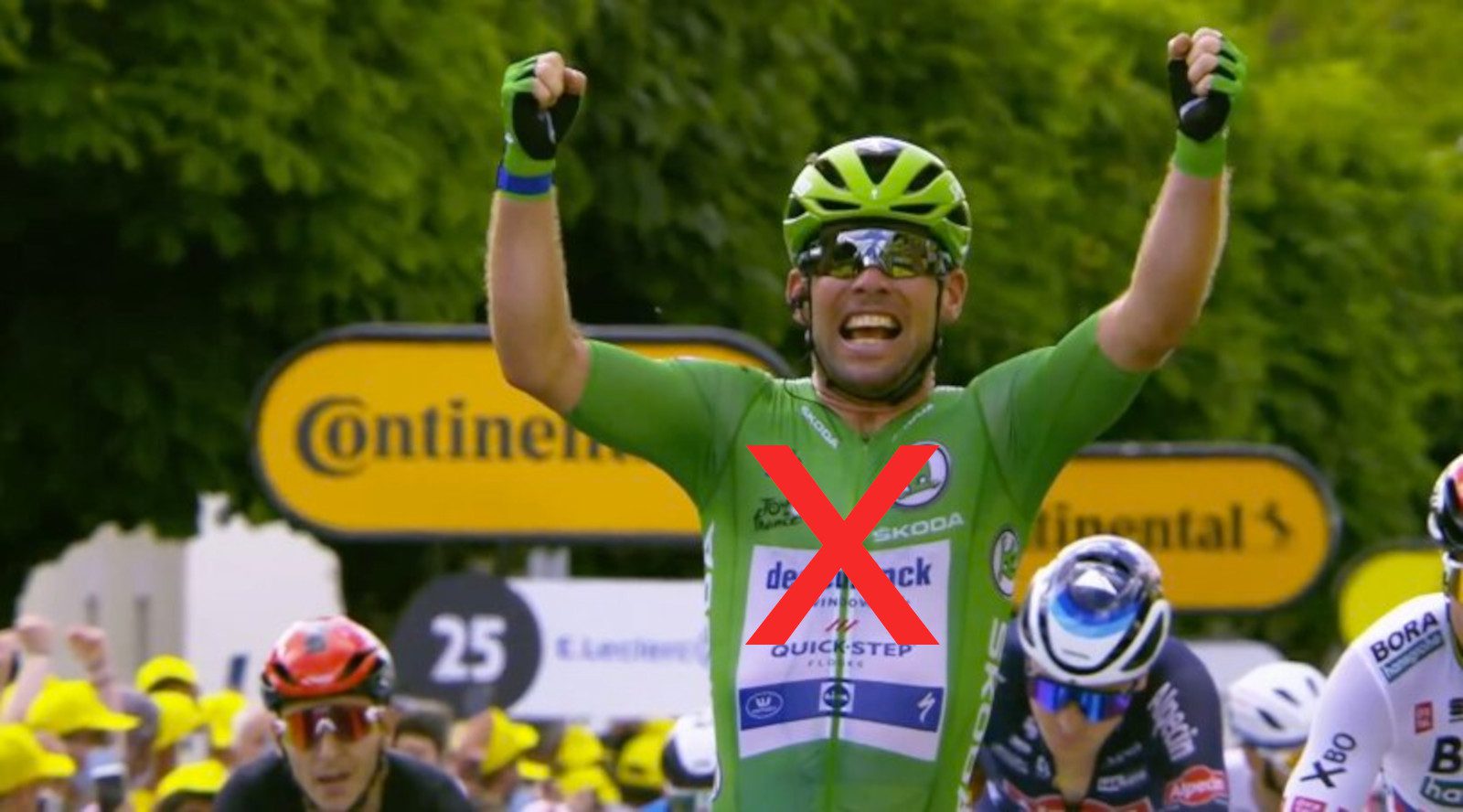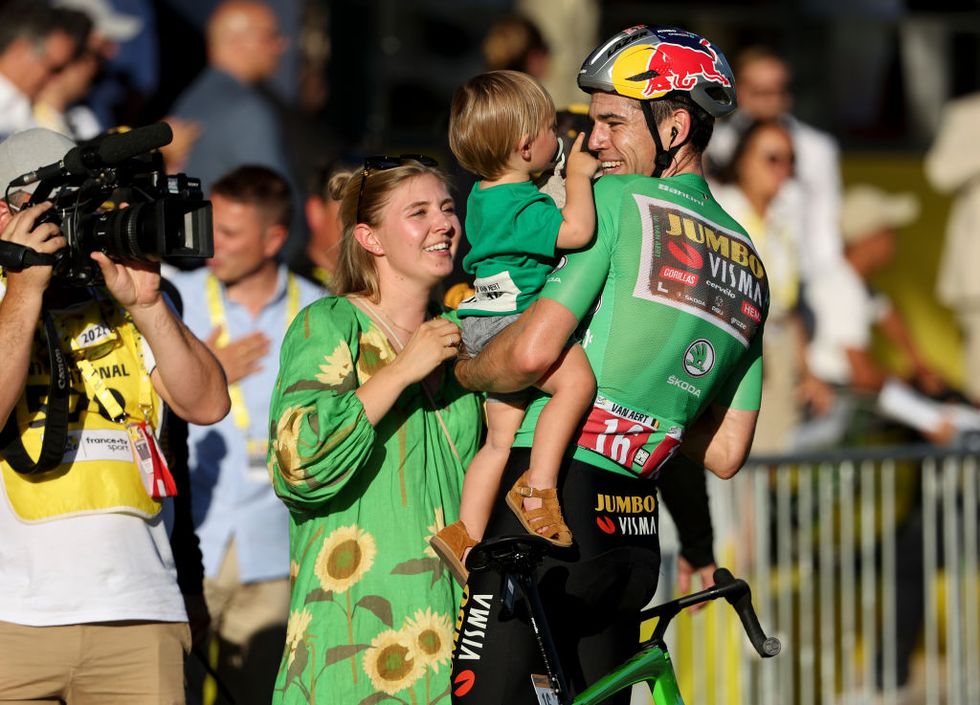What is the Significance of the Green Jersey in Cycling?
The Green Jersey, also known as the Points Classification, is a prestigious award in the Tour de France that recognizes the rider who accumulates the most points throughout the competition. To understand the significance of the Green Jersey, it’s essential to delve into its history and the role it plays in the Tour de France. The Green Jersey is one of the most coveted prizes in professional cycling, and its importance extends beyond the Tour de France, influencing the overall strategy of teams and riders in the world of cycling.
In the context of the Tour de France, the Green Jersey is often considered the second-most important prize after the Yellow Jersey, which is awarded to the overall winner of the competition. While the Yellow Jersey is awarded to the rider with the lowest aggregate time, the Green Jersey is awarded to the rider who accumulates the most points, which are earned by finishing in the top positions of each stage and at intermediate sprints. This distinction highlights the unique characteristics of the Green Jersey and its significance in the world of cycling.
When searching for information on the Green Jersey, many cycling enthusiasts and newcomers alike may ask, “What is the Green Jersey in the Tour de France?” The answer lies in its rich history, which dates back to 1953 when the Points Classification was first introduced. Since then, the Green Jersey has become an iconic symbol of excellence in cycling, with legendary riders like Eddy Merckx, Bernard Hinault, and Peter Sagan having won the coveted prize.
In addition to its historical significance, the Green Jersey also plays a crucial role in shaping the overall strategy of teams and riders in the Tour de France. Riders who specialize in sprinting and accumulating points often focus on winning the Green Jersey, while others may prioritize the Yellow Jersey or the Polka Dot Jersey, which is awarded to the King of the Mountains. This diversity of goals and strategies adds complexity and excitement to the competition, making the Tour de France one of the most thrilling events in the world of sports.
As the Tour de France continues to captivate audiences worldwide, the Green Jersey remains an integral part of its allure. Whether you’re a seasoned cycling enthusiast or a newcomer to the world of sports, understanding the significance of the Green Jersey is essential to appreciating the richness and complexity of the Tour de France.
How to Win the Green Jersey: A Guide to the Points System
To win the Green Jersey, riders must accumulate points throughout the Tour de France. The points system is designed to reward riders who consistently finish in the top positions of each stage and at intermediate sprints. The rider with the most points at the end of the competition is awarded the Green Jersey.
The points system is as follows: the first 15 riders to cross the finish line of each stage are awarded points, with the winner receiving 50 points, the second-place finisher receiving 30 points, and so on. Additionally, intermediate sprints, which are held at predetermined points during each stage, award points to the top three riders, with the winner receiving 20 points, the second-place finisher receiving 17 points, and the third-place finisher receiving 15 points.
For example, in the 2019 Tour de France, Peter Sagan won the Green Jersey by accumulating 316 points throughout the competition. Sagan’s victory was due in part to his consistent finishes in the top 10 of each stage, as well as his success in intermediate sprints.
Other notable winners of the Green Jersey include Eddy Merckx, who won the competition a record seven times, and Bernard Hinault, who won the competition four times. These riders, along with Sagan, are examples of the type of rider who excels in the points classification: those who are able to consistently finish in the top positions of each stage and at intermediate sprints.
When searching for information on the Green Jersey, many cycling enthusiasts and newcomers alike may ask, “What is the Green Jersey in the Tour de France?” The answer lies in the points system, which rewards riders who are able to accumulate the most points throughout the competition. By understanding the points system, fans can gain a deeper appreciation for the strategy and skill involved in winning the Green Jersey.
In addition to the points system, the Green Jersey competition is also influenced by the overall strategy of teams and riders in the Tour de France. Riders who specialize in sprinting and accumulating points often focus on winning the Green Jersey, while others may prioritize the Yellow Jersey or the Polka Dot Jersey. This diversity of goals and strategies adds complexity and excitement to the competition, making the Tour de France one of the most thrilling events in the world of sports.
The History of the Green Jersey: Past Winners and Notable Moments
The Green Jersey has a rich history in the Tour de France, dating back to 1953 when the Points Classification was first introduced. Since then, the competition has evolved over the years, with notable winners and memorable moments that have shaped the history of the Green Jersey.
One of the most iconic winners of the Green Jersey is Eddy Merckx, who won the competition a record seven times. Merckx’s dominance in the 1960s and 1970s helped establish the Green Jersey as a prestigious award in the world of cycling. Other notable winners include Bernard Hinault, who won the competition four times, and Peter Sagan, who has won the Green Jersey a record seven times.
One of the most memorable moments in the history of the Green Jersey was in 1979, when Bernard Hinault and Joop Zoetemelk engaged in a fierce battle for the Green Jersey. The competition was so intense that it came down to the final stage, with Hinault ultimately emerging victorious.
In recent years, the Green Jersey competition has become increasingly competitive, with riders like Peter Sagan, Mark Cavendish, and Marcel Kittel vying for the top spot. The competition has also become more tactical, with teams employing various strategies to gain an advantage in the points classification.
Despite the changes in the competition over the years, the Green Jersey remains one of the most coveted prizes in the Tour de France. Its rich history and prestige have made it a symbol of excellence in cycling, and its winners are revered as some of the greatest riders in the sport.
When searching for information on the Green Jersey, many cycling enthusiasts and newcomers alike may ask, “What is the Green Jersey in the Tour de France?” The answer lies in its rich history, which is filled with notable winners and memorable moments. By understanding the history of the Green Jersey, fans can gain a deeper appreciation for the competition and its significance in the world of cycling.
The Green Jersey has also played a significant role in shaping the overall strategy of teams and riders in the Tour de France. Riders who specialize in sprinting and accumulating points often focus on winning the Green Jersey, while others may prioritize the Yellow Jersey or the Polka Dot Jersey. This diversity of goals and strategies adds complexity and excitement to the competition, making the Tour de France one of the most thrilling events in the world of sports.
The Role of Sprinters in the Green Jersey Competition
Sprinters play a crucial role in the Green Jersey competition, as they are often the riders who accumulate the most points in the points classification. To succeed in the Green Jersey competition, sprinters must possess a unique combination of skills and strategies.
One of the key skills required to succeed in the Green Jersey competition is the ability to sprint at high speeds. Sprinters must be able to accelerate quickly and maintain their speed over a short distance, typically around 100-200 meters. This requires a combination of power, speed, and endurance.
In addition to their physical abilities, sprinters must also possess strong tactical skills. They must be able to read the race and anticipate the movements of their opponents, positioning themselves in the right place at the right time to maximize their chances of winning.
Notable sprinters who have won the Green Jersey include Peter Sagan, Mark Cavendish, and Marcel Kittel. These riders have demonstrated exceptional speed, power, and tactical awareness, allowing them to dominate the points classification and win the Green Jersey.
When searching for information on the Green Jersey, many cycling enthusiasts and newcomers alike may ask, “What is the Green Jersey in the Tour de France?” The answer lies in the skills and strategies required to succeed in the points classification, which are exemplified by the top sprinters in the competition.
The role of sprinters in the Green Jersey competition is not limited to their individual performances. They also play a crucial role in shaping the overall strategy of their teams. Teams with strong sprinters often focus on winning the Green Jersey, while others may prioritize the Yellow Jersey or the Polka Dot Jersey. This diversity of goals and strategies adds complexity and excitement to the competition, making the Tour de France one of the most thrilling events in the world of sports.
In conclusion, the role of sprinters in the Green Jersey competition is vital to the success of the points classification. Their unique combination of skills and strategies makes them the key players in the competition, and their performances are often the most exciting and unpredictable aspect of the Tour de France.
How the Green Jersey Impacts the Overall Tour de France Strategy
The Green Jersey competition has a significant impact on the overall strategy of teams and riders in the Tour de France. The points classification is often considered a secondary objective to the general classification, but it can still play a crucial role in shaping the outcome of the race.
Teams with strong sprinters often focus on winning the Green Jersey, as it can provide a valuable morale boost and help to secure sponsorship deals. However, this can also lead to a conflict of interests, as teams may need to balance their efforts between the Green Jersey and the general classification.
Riders who are competing for the Green Jersey may also need to adjust their strategy to focus on accumulating points, rather than trying to win individual stages. This can involve working with their teammates to secure intermediate sprints and stage finishes, rather than trying to launch a solo attack.
The Green Jersey competition can also affect the outcome of the general classification, as riders who are competing for the points classification may need to take risks and attack early in the stage to secure points. This can lead to a more aggressive and unpredictable racing style, which can benefit riders who are competing for the general classification.
For example, in the 2019 Tour de France, Peter Sagan’s focus on winning the Green Jersey led to a series of aggressive attacks and intermediate sprints, which ultimately helped to secure his seventh Green Jersey title. However, this also meant that he was not able to compete for the general classification, as he had exhausted himself in the pursuit of points.
When searching for information on the Green Jersey, many cycling enthusiasts and newcomers alike may ask, “What is the Green Jersey in the Tour de France?” The answer lies in its impact on the overall strategy of teams and riders, as well as its influence on the outcome of the general classification.
In conclusion, the Green Jersey competition plays a significant role in shaping the overall strategy of teams and riders in the Tour de France. Its impact on the general classification and the racing style of the peloton makes it a crucial aspect of the Tour de France, and its enduring appeal to fans and riders alike is a testament to its importance in the world of cycling.
Comparing the Green Jersey to Other Cycling Competitions
The Green Jersey competition is not unique to the Tour de France, as other notable cycling competitions, such as the Giro d’Italia and the Vuelta a España, also have their own points classifications. However, the Green Jersey is one of the most prestigious and highly contested points classifications in the world of cycling.
The Giro d’Italia’s points classification is known as the “Ciclamino Jersey,” and it is awarded to the rider who accumulates the most points throughout the competition. The Vuelta a España’s points classification is known as the “Puntos Jersey,” and it is also awarded to the rider who accumulates the most points.
While the points systems used in these competitions are similar to the Green Jersey, there are some key differences. For example, the Giro d’Italia’s points classification awards more points to riders who finish in the top 10 of each stage, while the Vuelta a España’s points classification awards more points to riders who win intermediate sprints.
Despite these differences, the Green Jersey remains one of the most highly contested points classifications in the world of cycling. Its rich history and prestige have made it a coveted prize among riders, and its influence on the overall strategy of teams and riders in the Tour de France is unparalleled.
When searching for information on the Green Jersey, many cycling enthusiasts and newcomers alike may ask, “What is the Green Jersey in the Tour de France?” The answer lies in its unique history and prestige, as well as its influence on the overall strategy of teams and riders in the Tour de France.
In conclusion, the Green Jersey competition is a unique and highly contested points classification that is unlike any other in the world of cycling. Its rich history and prestige have made it a coveted prize among riders, and its influence on the overall strategy of teams and riders in the Tour de France is unparalleled.
The Impact of the Green Jersey on the Popularity of Cycling
The Green Jersey competition has a significant impact on the popularity of cycling, particularly among fans who enjoy the excitement of sprint finishes. The Green Jersey is one of the most highly contested and closely watched competitions in the Tour de France, and its outcome can have a major impact on the overall popularity of the sport.
The Green Jersey competition is often considered the most exciting and unpredictable aspect of the Tour de France, as it is decided by a combination of individual stage wins and intermediate sprints. This format creates a high level of tension and suspense, as riders must constantly battle for position and points throughout the competition.
The Green Jersey competition also has a significant impact on the popularity of cycling among fans who enjoy the excitement of sprint finishes. The competition is often decided by a photo finish, with riders crossing the line in a tight bunch. This creates a high level of drama and excitement, as fans are left wondering who will emerge victorious.
In addition to its impact on the popularity of cycling, the Green Jersey competition also has a significant impact on the sport’s global reach. The Tour de France is broadcast in over 190 countries around the world, and the Green Jersey competition is one of the most highly anticipated and closely watched aspects of the event.
When searching for information on the Green Jersey, many cycling enthusiasts and newcomers alike may ask, “What is the Green Jersey in the Tour de France?” The answer lies in its impact on the popularity of cycling, as well as its influence on the overall strategy of teams and riders in the Tour de France.
In conclusion, the Green Jersey competition has a significant impact on the popularity of cycling, particularly among fans who enjoy the excitement of sprint finishes. Its unpredictable format and high level of tension and suspense create a high level of drama and excitement, making it one of the most highly anticipated and closely watched aspects of the Tour de France.
Conclusion: The Enduring Appeal of the Green Jersey
The Green Jersey is a prestigious award in the Tour de France that has been a cornerstone of the competition since its inception in 1953. Its significance extends beyond the Tour de France, as it is a symbol of excellence in cycling and a coveted prize among riders.
Throughout this article, we have explored the history of the Green Jersey, its significance in the Tour de France, and its impact on the popularity of cycling. We have also examined the skills and strategies required to succeed in the points classification, and profiled notable sprinters who have won the Green Jersey.
The Green Jersey competition is a unique and exciting aspect of the Tour de France, and its enduring appeal to fans and riders alike is a testament to its importance in the world of cycling. Whether you are a seasoned cycling enthusiast or a newcomer to the sport, the Green Jersey is an award that is sure to captivate and inspire.
When searching for information on the Green Jersey, many cycling enthusiasts and newcomers alike may ask, “What is the Green Jersey in the Tour de France?” The answer lies in its rich history, its significance in the Tour de France, and its impact on the popularity of cycling.
In conclusion, the Green Jersey is a prestigious award that is steeped in history and tradition. Its significance extends beyond the Tour de France, as it is a symbol of excellence in cycling and a coveted prize among riders. Whether you are a fan of cycling or just starting to learn about the sport, the Green Jersey is an award that is sure to captivate and inspire.









